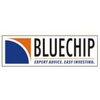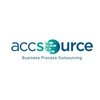Filter interviews by
S.S. Kothari Mehta & Co Executive Interview Questions and Answers
11 Interview questions
Cash and bank are generally considered low risk items due to their stability and liquidity.
Cash and bank deposits are easily accessible and can be quickly converted into cash if needed.
Banks are typically insured by government agencies, providing an additional layer of security for deposits.
While there is a risk of theft or fraud, proper security measures can mitigate these risks.
Investing in high-risk assets like...
ROU Asset can be calculated by determining the present value of lease payments and adding initial direct costs.
Calculate the present value of lease payments using the discount rate
Add any initial direct costs incurred in obtaining the lease
Subtract any lease incentives received from the lessor
Consider any impairment charges or adjustments needed for the ROU Asset
Example: Present value of lease payments = $100,000,...
Inventory valuation methods include FIFO, LIFO, weighted average, and specific identification.
FIFO (First In, First Out) - assumes that the oldest inventory items are sold first
LIFO (Last In, First Out) - assumes that the newest inventory items are sold first
Weighted Average - calculates the average cost of inventory items based on their weights
Specific Identification - assigns the actual cost of each inventory it...
Revenue recognition under Ind AS involves following specific criteria and guidelines.
Revenue should be recognized when it is probable that economic benefits will flow to the entity and the revenue can be reliably measured.
Revenue should be recognized at the fair value of the consideration received or receivable.
Revenue should be recognized when specific criteria are met, such as transfer of risks and rewards of ow...
CARO 2020 introduced significant changes compared to CARO 2016.
Expanded scope of reporting requirements
Introduction of new reporting formats
Enhanced focus on fraud detection and reporting
Increased responsibilities for auditors
Additional disclosures related to related party transactions
Fixed asset audits involve physical verification, reconciliation with records, and assessment of depreciation.
Perform physical verification of fixed assets to ensure they exist and are in the stated condition.
Reconcile fixed asset records with financial statements to identify any discrepancies.
Assess the depreciation of fixed assets to ensure it is accurately recorded.
Verify the location and usage of fixed assets ...
Cutoff procedure is a process of determining a specific point in time for ending a particular activity or transaction.
Cutoff procedure is performed to ensure accurate financial reporting by capturing all relevant transactions within a specific period.
It involves setting a specific date and time to stop recording transactions for a particular period, such as month-end or year-end.
The procedure includes reviewing an...
Contingent liabilities are recognized when it is probable that a liability will occur and the amount can be reasonably estimated.
Contingent liabilities are recognized when it is probable that a liability will occur and the amount can be reasonably estimated.
Probable cases are those where the occurrence of the liability is likely based on available evidence.
Possible cases are those where the occurrence of the liabi...
Ind AS 116 is a new lease accounting standard that replaces the existing Ind AS 17.
Ind AS 116 changes the accounting treatment for leases, requiring lessees to recognize most leases on their balance sheets.
It eliminates the distinction between operating and finance leases for lessees.
Lessees must now recognize a right-of-use asset and a lease liability for almost all leases.
The standard aims to provide a more fait...
SA 402 is a standard on auditing of accounting estimates and related disclosures. It prescribes an auditor's report.
SA 402 provides guidance on auditing accounting estimates and related disclosures.
It requires the auditor to evaluate the reasonableness of accounting estimates made by management.
The standard also emphasizes the importance of disclosures related to accounting estimates in financial statements.
SA 402...
S.S. Kothari Mehta & Co Executive Interview Experiences
1 interview found
I applied via Thinking Bridge and was interviewed before Oct 2022. There were 3 interview rounds.
(4 Questions)
- Q1. How to calculate ROU Asset?
- Ans.
ROU Asset can be calculated by determining the present value of lease payments and adding initial direct costs.
Calculate the present value of lease payments using the discount rate
Add any initial direct costs incurred in obtaining the lease
Subtract any lease incentives received from the lessor
Consider any impairment charges or adjustments needed for the ROU Asset
Example: Present value of lease payments = $100,000, Init...
- Q2. What is Ind As 116 about? Tell me about it.
- Ans.
Ind AS 116 is a new lease accounting standard that replaces the existing Ind AS 17.
Ind AS 116 changes the accounting treatment for leases, requiring lessees to recognize most leases on their balance sheets.
It eliminates the distinction between operating and finance leases for lessees.
Lessees must now recognize a right-of-use asset and a lease liability for almost all leases.
The standard aims to provide a more faithful ...
- Q3. How can we recognize revenue under Ind As?
- Ans.
Revenue recognition under Ind AS involves following specific criteria and guidelines.
Revenue should be recognized when it is probable that economic benefits will flow to the entity and the revenue can be reliably measured.
Revenue should be recognized at the fair value of the consideration received or receivable.
Revenue should be recognized when specific criteria are met, such as transfer of risks and rewards of ownersh...
- Q4. What are the changes between CARO 2020 and CARO 2016?
- Ans.
CARO 2020 introduced significant changes compared to CARO 2016.
Expanded scope of reporting requirements
Introduction of new reporting formats
Enhanced focus on fraud detection and reporting
Increased responsibilities for auditors
Additional disclosures related to related party transactions
(7 Questions)
- Q1. What does SA 402 says? What type of report does it prescribe?
- Ans.
SA 402 is a standard on auditing of accounting estimates and related disclosures. It prescribes an auditor's report.
SA 402 provides guidance on auditing accounting estimates and related disclosures.
It requires the auditor to evaluate the reasonableness of accounting estimates made by management.
The standard also emphasizes the importance of disclosures related to accounting estimates in financial statements.
SA 402 pres...
- Q2. How do you audit fixed asset?
- Ans.
Fixed asset audits involve physical verification, reconciliation with records, and assessment of depreciation.
Perform physical verification of fixed assets to ensure they exist and are in the stated condition.
Reconcile fixed asset records with financial statements to identify any discrepancies.
Assess the depreciation of fixed assets to ensure it is accurately recorded.
Verify the location and usage of fixed assets to co...
- Q3. When can you make contingent liability? What do you understand about probable, possible and remote cases?
- Ans.
Contingent liabilities are recognized when it is probable that a liability will occur and the amount can be reasonably estimated.
Contingent liabilities are recognized when it is probable that a liability will occur and the amount can be reasonably estimated.
Probable cases are those where the occurrence of the liability is likely based on available evidence.
Possible cases are those where the occurrence of the liability ...
- Q4. Is cash and bank high risk item or low risk item?
- Ans.
Cash and bank are generally considered low risk items due to their stability and liquidity.
Cash and bank deposits are easily accessible and can be quickly converted into cash if needed.
Banks are typically insured by government agencies, providing an additional layer of security for deposits.
While there is a risk of theft or fraud, proper security measures can mitigate these risks.
Investing in high-risk assets like stoc...
- Q5. What are the methods of inventory valuation?
- Ans.
Inventory valuation methods include FIFO, LIFO, weighted average, and specific identification.
FIFO (First In, First Out) - assumes that the oldest inventory items are sold first
LIFO (Last In, First Out) - assumes that the newest inventory items are sold first
Weighted Average - calculates the average cost of inventory items based on their weights
Specific Identification - assigns the actual cost of each inventory item to...
- Q6. Different assertions in audit.
- Ans.
Different assertions in audit refer to various claims or statements made during the auditing process to evaluate the accuracy and reliability of financial information.
Existence assertion: Ensuring that assets and liabilities actually exist at a given date.
Completeness assertion: Verifying that all transactions and accounts are recorded in the financial statements.
Valuation assertion: Confirming that assets and liabilit...
- Q7. What is cutoff procedure? How do you perform it? Why it is performed?
- Ans.
Cutoff procedure is a process of determining a specific point in time for ending a particular activity or transaction.
Cutoff procedure is performed to ensure accurate financial reporting by capturing all relevant transactions within a specific period.
It involves setting a specific date and time to stop recording transactions for a particular period, such as month-end or year-end.
The procedure includes reviewing and adj...
(1 Question)
- Q1. What is your salary expectation?
Interview Preparation Tips
- Ind AS 116
- Ind AS 115
- Ind AS 16
- Standards on Auditing
- CARO reporting
Top trending discussions






Interview questions from similar companies

I appeared for an interview in Jan 2025, where I was asked the following questions.
- Q1. Tell me about yourself
- Q2. Why should we hire you

I applied via Naukri.com and was interviewed in Nov 2023. There were 3 interview rounds.
(1 Question)
- Q1. Tell me about yourself
- Ans.
Dynamic executive with 15 years of experience in strategic leadership, driving growth and innovation across diverse industries.
Proven track record in leading cross-functional teams to achieve organizational goals, such as increasing revenue by 30% in two years.
Expert in developing and implementing strategic initiatives that enhance operational efficiency, exemplified by a 25% reduction in costs through process optimiza...
(1 Question)
- Q1. What is book keeping
- Ans.
Bookkeeping is the process of recording and organizing financial transactions of a business.
Bookkeeping involves recording all financial transactions, such as sales, purchases, and expenses.
It helps in maintaining accurate financial records and tracking the financial health of a business.
Bookkeepers use various methods like double-entry bookkeeping to ensure accuracy.
Bookkeeping is essential for preparing financial sta...
(1 Question)
- Q1. Salary discussion
Interview Preparation Tips

Basic aptitude test and Accounting test
(2 Questions)
- Q1. What u have extra done apart from college life
- Q2. Tell me about yourself
- Ans.
Dynamic executive with over 15 years of experience in strategic leadership, driving growth, and fostering innovation across diverse industries.
Proven track record in leading cross-functional teams to achieve organizational goals, such as increasing revenue by 30% in two years.
Expertise in developing and implementing strategic initiatives that enhance operational efficiency, exemplified by a successful cost-reduction pr...
Interview Preparation Tips

Senior Executive Interview Questions & Answers
Mercurius Advisory Servicesposted on 5 Oct 2021
I applied via Naukri.com and was interviewed before Oct 2020. There were 3 interview rounds.
Interview Questionnaire
1 Question
- Q1. Related to Accounting
Interview Preparation Tips

I applied via Recruitment Consulltant and was interviewed in May 2022. There were 4 interview rounds.

(1 Question)
- Q1. Total Experience, Relevant Experience, Salary Expectation, Relevant Qualification
(1 Question)
- Q1. Job profile in ex companies, team size handled, work performed
- Ans.
I have managed teams of various sizes and handled diverse job profiles in my previous companies.
Managed a team of 10 employees in Company A
Handled a team of 20 employees in Company B
Performed tasks such as project management, budgeting, and performance evaluations
Led cross-functional teams to successfully complete projects on time and within budget
Implemented process improvements to increase efficiency and productivity
(1 Question)
- Q1. About Technical knowledge
Interview Preparation Tips

I applied via Approached by Company and was interviewed before Jul 2021. There were 2 interview rounds.
(1 Question)
- Q1. Past experience description
(1 Question)
- Q1. Ind as, caro, schedule iii revisions
Interview Preparation Tips

Senior Executive Interview Questions & Answers
Mercurius Advisory Servicesposted on 4 Jul 2025
I appeared for an interview before Jul 2024, where I was asked the following questions.
- Q1. Loan reconciliation
- Q2. Depreciation and account concept

Senior Executive Interview Questions & Answers
Mercurius Advisory Servicesposted on 5 Oct 2021
I applied via Naukri.com and was interviewed before Oct 2020. There were 5 interview rounds.
Interview Questionnaire
1 Question
- Q1. Related to basics of accounting,BRS,Golden rules of accounts,Payroll entry.
Interview Preparation Tips

Senior Executive Interview Questions & Answers
Mercurius Advisory Servicesposted on 20 Jun 2025
- Q1. How many software applications have you worked with?
- Q2. Are you familiar with inter-company transactions and reconciliation?
Interview Preparation Tips
S.S. Kothari Mehta & Co Interview FAQs
Some of the top questions asked at the S.S. Kothari Mehta & Co Executive interview -
Tell us how to improve this page.
S.S. Kothari Mehta & Co Interviews By Designations
- S.S. Kothari Mehta & Co Article Assistant Interview Questions
- S.S. Kothari Mehta & Co Risk Advisory Executive Interview Questions
- S.S. Kothari Mehta & Co Audit Manager Interview Questions
- S.S. Kothari Mehta & Co Executive Interview Questions
- S.S. Kothari Mehta & Co Article Trainee Interview Questions
- S.S. Kothari Mehta & Co Auditor Interview Questions
- S.S. Kothari Mehta & Co Audit Assistant Interview Questions
- S.S. Kothari Mehta & Co CA Article Trainee Interview Questions
- Show more
Interview Questions for Popular Designations
Overall Interview Experience Rating
based on 1 interview experience
Difficulty level
Duration
Interview Questions from Similar Companies
S.S. Kothari Mehta & Co Executive Reviews and Ratings
based on 25 reviews
Rating in categories
|
Executive
115
salaries
| ₹4.2 L/yr - ₹9.5 L/yr |
|
Audit Executive
90
salaries
| ₹3.8 L/yr - ₹9 L/yr |
|
Senior Executive
82
salaries
| ₹5.3 L/yr - ₹12 L/yr |
|
Assistant Manager
49
salaries
| ₹6 L/yr - ₹13.8 L/yr |
|
Article Assistant
39
salaries
| ₹0.9 L/yr - ₹3 L/yr |

Bluechip Corporate Investment Centre

T R Chadha & Co Llp

Escalon Business Services

H&R Block
- Home >
- Interviews >
- S.S. Kothari Mehta & Co Interview Questions














